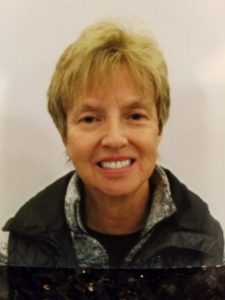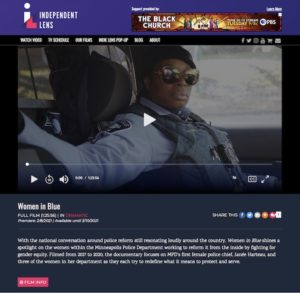Have Vaccine, Will Travel
February 24, 2021 • 10 Comments • Posted in careers/jobs for people who are blind, teaching memoir, travelOn January 27 we had to reschedule The Zoom memoir-writing class I lead Wednesdays at The Admiral at the Lake, and for good reason: every resident and staff member at that Continuing Care Retirement Community was getting the COVID-19 vaccine that day.
At our rescheduled Zoom class, writers reported how each resident had an appointed time to head to the vaccine room, how staff had decorated that room with balloons, played celebratory music in the background, offered to take pictures of anyone wanting to mark the occasion. “It was like a party!” one said.
After their jab, they were directed to another room to sit and wait for a 15-minute observation period in case of rare allergic reactions. “They had to shoo people out of that room,” another writer said with a laugh, reminding me that with COVID protocol in place, many hadn’t been in the same room at the same time in months. “We didn’t want to leave.”
Today, February 24, 2021, everyone at The Admiral is getting their second COVID-19 vaccination. Studies show You don’t reach full protection until two weeks after your second (or final) dose, which leaves one to wonder. What will a Continuing Care Retirement Community with 200 units look like two weeks from now, when everyone there is “set free” on the very same day? If a story in last week’s New York Times is right, the answer to that question is likely to be…empty.
The New York Times story refers to a January survey by the travel agency network Virtuoso that found 83% of respondents over age 77 saying they were more ready to travel in 2021 than in 2020, and 95 percent of the same group saying they would wait to travel until they received their vaccine. Older people are more eager to travel in 2021 than other age groups and more likely to link the timing of their travel to when they receive their vaccinations. From the article:
At the Foundry Hotel in Asheville, N.C., an 87-room luxury hotel housed in what was once a steel factory for the Biltmore Estate, reservations made with the hotel’s AARP promotional rate were up 50 percent last month. Aqua-Aston Hospitality, a Honolulu-based company with resorts, hotels and condos in its portfolio, reports that senior-rate bookings climbed nearly 60 percent in January.
The New York Times story focused on people of a certain age going to fancy places in warm climates, but writers in my memoir classes seem much more keen on visiting faraway familly members and friends, no matter where they are. That said, the storycame with a fabulous headline : A Different Early-Bird Special: Have Vaccine, Will Travel” – and for that alone, I’m banking on The New York Times. I usually give memoir-writing classes a two-to four-week break between sessions, but with those statistics in mind, I’m giving my Admiral group eight weeks off instead: two weeks to let the vaccine kick in, and four to take all the vacations and trips they had to forego this past year.
Just imagine the stories they’ll come home with!



